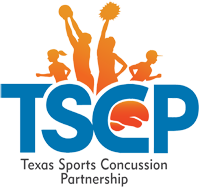Various tests are available to assist with evaluating whether a student has a concussion. This is an overview of some that have attracted attention.
King-Devic Test
- This is a brief test of visual scanning and attention developed for use in acute post-concussion examination settings to aid clinicians in detecting impaired mental status.
- Like other quick tests of attention that are available, the King-Devic has shown some initial promise as a potential screening tool, but may be no more sensitive than similar brief tests.
- Further research is needed to determine its sensitivity, specificity, and utility in clinical decision-making, and in comparison with more detailed measures of cognitive function.
Balance Testing
- Concussion symptoms usually fall into the general domains of cognitive (attention/concentration/memory), emotional (irritability/depression/anxiety), and physical (balance/dyscoordination, sleep disturbance, etc), and balance is often affected.
- As such, an assessment of balance following concussion as part of a comprehensive concussion assessment protocol has been recommended by many healthcare organizations.
Various balance tests are available and range from simple clinical observation of standard postures to computerized systems that provide a detailed analysis of sway and balance.
Scat Forms
- The SCAT (now in its third iteration, i.e., SCAT3) is a standardized assessment tool that clinicians can use to briefly assess and quantify aspects of cognition, balance/coordination, and symptoms.
- It is used in the NHL and NFL concussion programs and administered at preseason baseline and the day of injury, with repeat assessments possible until recovery has occurred.
- It has shown good sensitivity to the acute effects of concussion and in tracking early recovery.
Graded Symptoms Checklist
- Self-report checklists that include common symptoms associated with concussion are an important part of concussion evaluation.
- Patients are asked to rate the presence and severity of each symptom on a scale ranging from “none” to “severe”.
- The key advantage is to allow assessment and tracking of post-concussion symptoms and recovery over time, but because they rely upon self-report, responses may vary, as many symptoms are non-specific to concussion and can be influenced by other factors.
Vestibular Testing
- Vestibular assessment is useful when lingering post-concussion symptoms include dizziness or problems with balance
- Vestibular rehabilitation can help treat symptoms of dizziness and balance that do not resolve with rest.
Helmet Accelerometers
- Some schools are involved in research that includes the use of sensors in football helmets that detect hits and associated g-forces
- At present, there does not appear to be a direct link between g-force measurements of hits and clinical symptoms of concussion due to the wide variability of concussion symptoms across individuals
- More research is needed to test whether measurements of hits and g-forces are useful in the assessment and management of concussion
Eye Tracking
- Visual disturbances can occur after concussion and may include blurred vision, abnormal pupillary responses, and/or problems with eye movements and visual tracking
- Clinical examination of visual symptoms after concussion is important and is the gold standard
- Computerized devices that quantify eye movements have been developed and are being validated for use in cases of known or suspected concussion, with more research to be done to determine sensitivity, specificity, reliability, and utility in concussion assessment
Concussion Education
- Education about concussion and its common symptoms can help reduce post-concussion distress
- Concussion programs should provide adequate information about concussion effects and expected recovery
- One of the major treatments for concussion is physical and cognitive rest, although how much rest is ideal remains a topic of debate, since too much rest may actuallycontribute to lingering symptoms

Leave a Reply